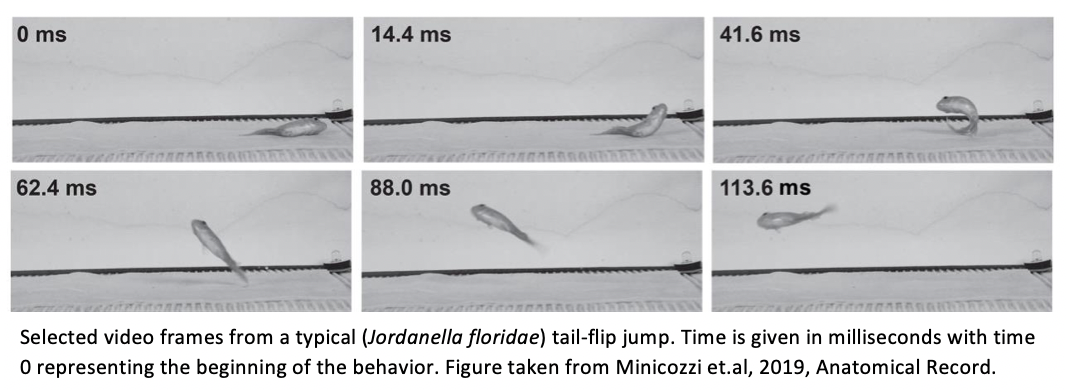Dr. Michael Minicozzi, Associate Professor
PhD | Faculty
Office | 144 Trafton Science Center S
507-389-1778
michael.minicozzi@mnsu.edu
Degree
- PhD, Northern Arizona University
Research Interests
- Comparative Anatomy and Functional Morphology in Fishes
- Ecotoxicology in aquatic systems
Research in my lab is broadly focused on the interaction between anatomy, physiology, and the environment of fishes. Many fishes that are considered fully aquatic without apparent morphological specialization for terrestrial locomotion are capable of producing effective overland movements We seek to answer foundation questions such as, how do animals transition to new environments (water to land transition)? By utilizing this amphibious fish model, we investigate the morphologies, behaviors and physiology needed for killifishes (Cyprinodontiformes) to live an amphibious lifestyle. Specifically, projects in my lab include:
- Documenting the kinematics of these behaviors using high speed cinematography.
- Understanding the role of the skeletal system in the water to land transition.
- Understanding how and why muscle distribution is altered between aquatic and amphibious fishes.
- Examining if performance tradeoffs exist between aquatic and terrestrial locomotion.

My lab’s second major area of research is applying morphological tools and techniques to the field of ecotoxicology. Within this framework, we investigate environmental pollutants of freshwater systems and their effects on developing fishes. Using stickleback and zebrafish as a model, we have shown that pollutants such as perchlorate can modify organ systems, cellular architecture, behavior and morphology. Because many of the developmental programs are conserved between fishes and humans, these results have direct applications to human health outcomes. Specifically, projects in this area of research include the effects of perchlorate on:
- The development and progression of non-alcoholic fatty liver disease (NAFLD) and obesity.
- The development of the reproductive system and primordial germ cells.
- Performance and physiology of locomotion and predator escape responses.
- The morphology and composition of the skeletal system.


